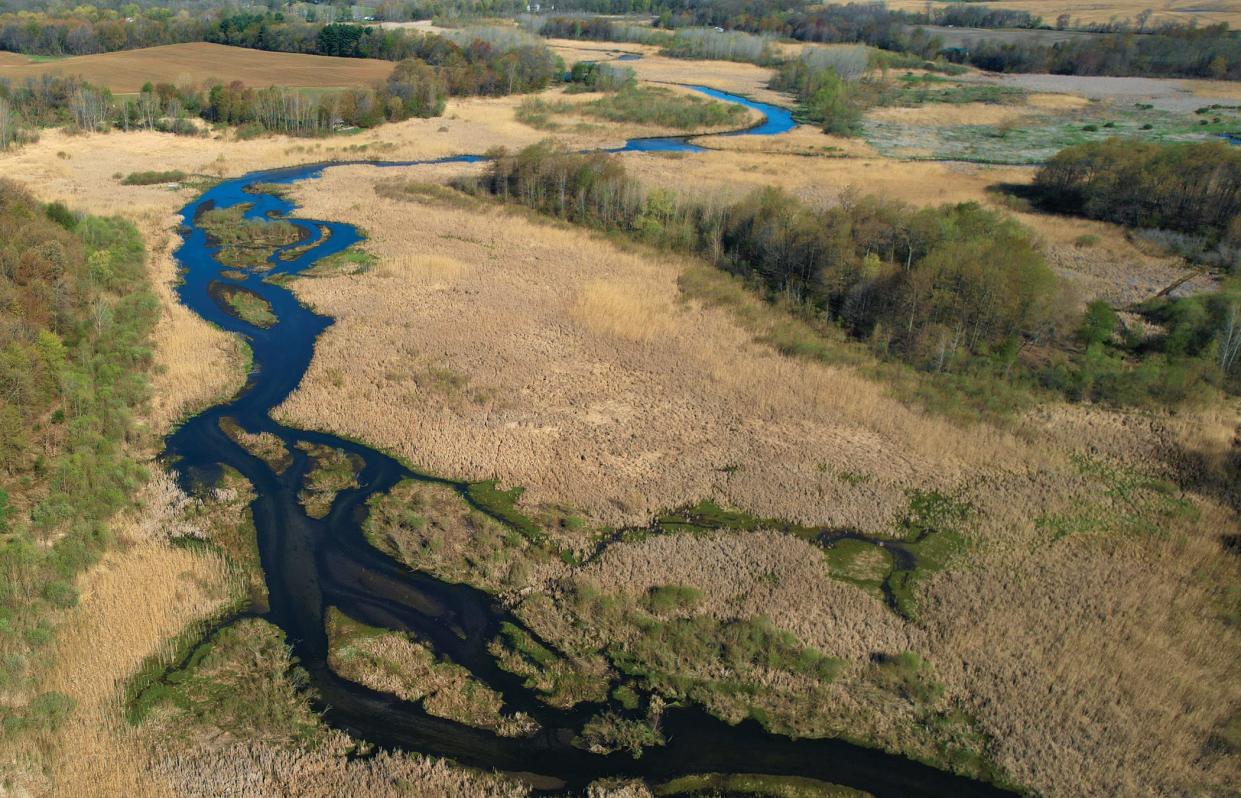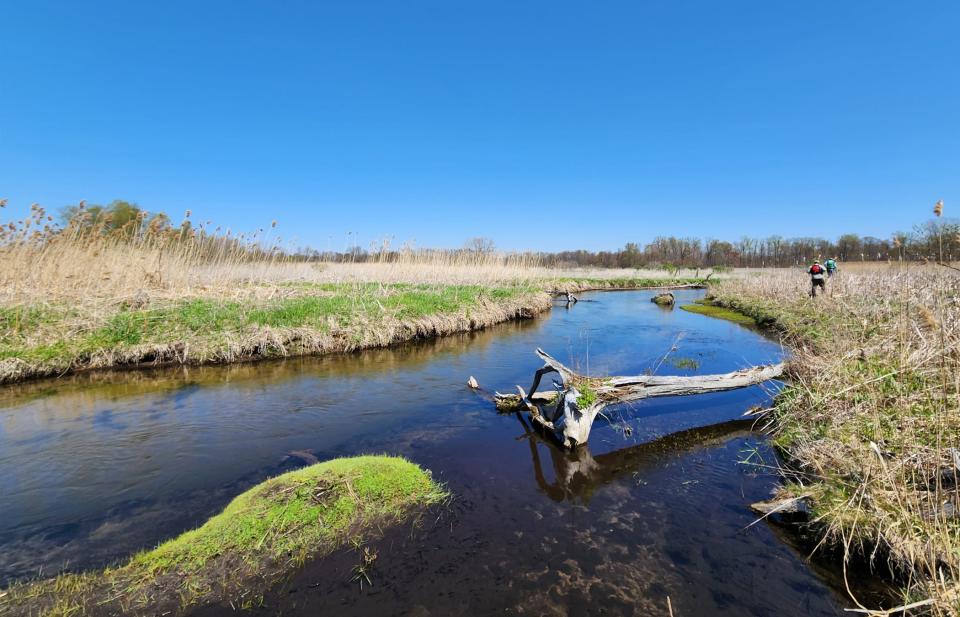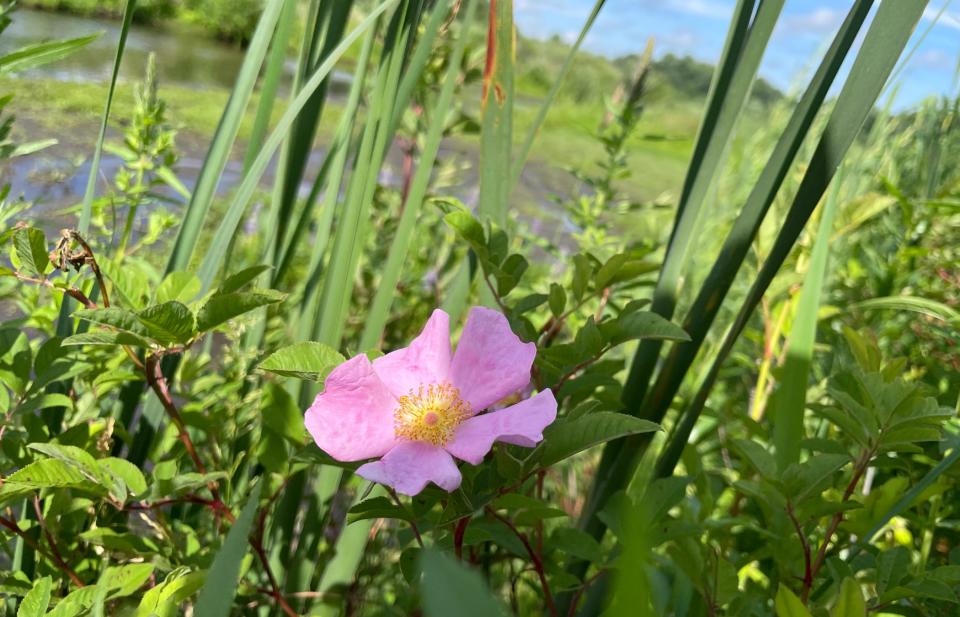Large wetlands in Cass County with endangered species to be protected and restored

A 457-acre wetland north of Cassopolis and southeast of Dowagiac with two nesting bald eagles and two federally endangered species — including the eastern massasauga rattlesnake — will be protected once the Southwest Michigan Land Conservancy closes on the property early in 2024.
The organization raised the match it needed this year to secure the $125,000 challenge grant from the Carls Foundation, helping it to purchase the LaGrange Valley Wetlands. It’s the former Lake LaGrange, sitting at the eastern edge of the town of LaGrange.
Next, the Southwest Michigan Land Conservancy will begin the work of removing invasive species, especially the pernicious plant phragmites, and then restoring the wetland to its original wild state over the long term.
The organization had already identified it as a "biodiversity hotspot" in its Climate Resilience Strategic Conservation Plan. It’s similar in many ways to the 2,000 acres that the Edward Lowe Foundation protected directly to the east, a habitat with wetlands known as Big Rock Valley, where several eastern massasauga rattlesnakes have been documented.
Search in a wetland (plus a snake): Sarett naturalists chase rare, endangered butterfly in its brief, winged life
Anecdotally, the snakes have also been seen in the LaGrange Valley Wetlands, communications specialist Amelia Hansen says. It makes sense that they'd dwell there, too, she says, because the two properties are linked by the Dowagiac and Talkie creeks.

It’s also near the Jones Conservation Area Hub.
There aren’t any plans to build trails or access. The agency has thought about creating a viewing area but doesn't have any plans, Hansen says; it would take additional fundraising to buy more land and build a boardwalk over marshy ground. She says you can partially see the wetlands from Lindy’s Restaurant in LaGrange, though the view is obscured by phragmites. Other than that, you can view it from the busy Michigan 62 bridge as you’re driving across Dowagiac Creek, just north of Lindy’s, at the wetlands’ western edge. Or see it from its eastern edge at rural O’Keefe Road as it crosses the creek north of Shurte Street.
The photos here make you wonder about kayaking, but staff say both the Dowagiac and Talkie are pretty inaccessible, either because of private land issues or difficult terrain. Besides, the water levels drop in summer, so you'd get stuck in the muck.
Who lives there? Six critters to love and why they need Indiana's 'isolated' wetlands
The agency’s ultimate goal is to protect an important fen habitat with upland islands and tall hardwood trees that harbor a lot of wildlife, including several state threatened or endangered species like the Blanding’s turtle. And no, Hansen says, the agency’s not revealing the other federally endangered species — apart from the massasauga rattlesnake — out of a need to protect it.
To learn more about the project and see a map, visit swmlc.org.

Donate your deer for the hungry
If you harvest a deer this season, you can donate it to feed hungry families across Indiana. And it won’t cost you anything to have the meat processed. The newly renamed program Indiana Hunt for Hunger takes care of everything.
Started in 2008 by the Indiana Department of Natural Resources and partners, it had been known as the Sportsmen’s Benevolence Fund. The new name and website, the DNR says, better reflects what the program does — and, hopefully, raises awareness and more participation.
Hunters simply need to take their field-dressed harvested deer to one of 51 meat processors across Indiana, who will then turn it into venison burger and donate the meat to area food banks. The Food Bank of Northern Indiana is among the recipients.
'Tis the season: Indiana fall hunting seasons set for deer and other game. Here are the 2023 dates.
You can find the list of processors at the program’s website, on.IN.gov/huntforhunger. Indiana Hunt for Hunger pays for the meat processing fee. Processors who want to join the list can contact DNR Capt. Jet Quillen at jquillen@dnr.IN.gov or 317-232-0658.
Venison from one deer can generate about 200 meals, the DNR estimates.
The program will continue its partnerships with Hoosiers Feeding the Hungry, the Dubois County Sportsmen’s Club and Farmers & Hunters Feeding the Hungry.
Suzie Jordan, executive director of Hoosiers Feeding the Hungry, says more than 500,000 pounds of venison have been shared through the program since 2008. But, she adds, “As the name changes to Hunt for Hunger, we can increase the awareness of the partnership between our nonprofit agency and the Indiana DNR to strengthen and expand the knowledge of our mission to Hoosier hunters, our processors, and food banks throughout the state.”
Indiana Trails Advisory Board
If you’re reading this column, you are likely passionate about trails. Indiana’s DNR might use your help on the Indiana Trails Advisory Board, which is seeking representatives of the following trail groups: bicyclists, health, off-road motorcyclists, parks and recreation agencies, and water trail users.
Local paddling enthusiast Margaret Easton, of the Paddle Michiana Facebook group, says she plans to reapply for her three-year term representing water trail users. Nominees, like her, should be involved with a regional or statewide organization, club or association related to the group they’d represent. The board consists of 15 volunteers altogether (so it covers other kinds of trail use, too) and provides recommendations to DNR staff on trail issues across the state, while keeping each other and their constituents informed.
The three-year terms start March 2024. The board meets at varying locations around the state at 3 p.m. on the first Thursday of March, June, September and December. Nominations can be filed from Dec. 1-30. Do that and learn more about the board at https://bit.ly/tab-nom.
Embrace the cold … and a tree
∎ Mishawaka ice opens with free fest: The Ironworks Ice Rink in downtown Mishawaka opens its skating season with the free, annual WinterFest from 5 to 9 p.m. Dec. 2. The city’s ice path and square rink marks its second season with a return of bumper cars and IceByks, rented at select 15-minute time slots. New this year are a couple of small curling boards, where you slide a smooth, round “stone” towards a target. A lighted parade kicks off at 5:30 p.m. from the City Hall parking lot, rolling down North Mill Street and Ironworks Avenue, then returning via West Front Street and North West and First streets. The fest will also include tree lighting, photos with Santa, food trucks, a winter market, a trackless train, axe throwing, face painting, fire performers and an ice carver. It’s best to book your ice times at mishawakaice.com.
∎ Tips to keep warm: Harbor Country Hikers President Pat Fisher will offer tips on how to keep warm and safe on winter hikes at the group’s hike at 1 p.m. Dec. 2 at the Edward and Elizabeth Leonard Wildlife Preserve in Union Pier. The 108-acre preserve has mature woods, wetlands and farmland at 15800 Lakeside Road. Coming from Three Oaks, take Warren Woods Road west of Interstate 94 and turn left on Lakeside Road, where you’ll find a parking lot.
∎ Disc golf poker: From noon to 5:30 p.m. Dec. 2, pick up your poker hand at the gatehouse at Ferrettie-Baugo Creek County Park in Osceola, and then swap out a card at select holes as you play the disc golf course. The person with the top hand wins a 2024 disc golf combo pass.
∎ Forests of southwest Michigan: Learn about the types of forest communities in Berrien County and the species that populate them in a free talk by Chikaming Open Lands Executive Director Ryan Postema at 6:30 p.m. Dec. 5 at the New Buffalo Township Library, 33 N. Thompson St. in downtown New Buffalo.
Find columnist Joseph Dits on Facebook at SBTOutdoorAdventures or 574-235-6158 or jdits@sbtinfo.com.
This article originally appeared on South Bend Tribune: Cass wetlands endangered species with massasauga rattlesnake protected

